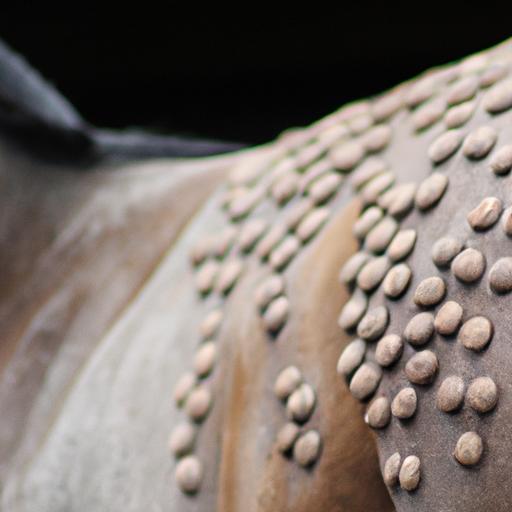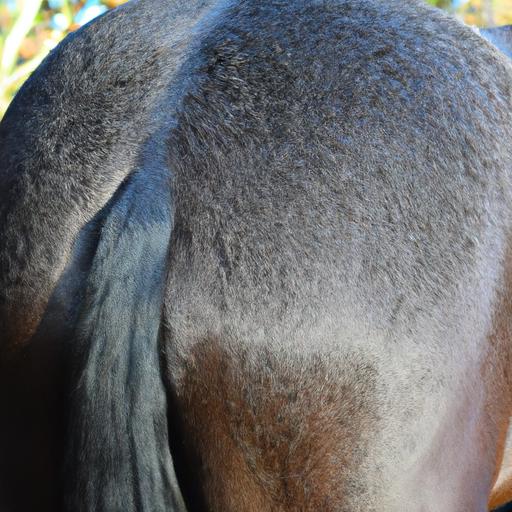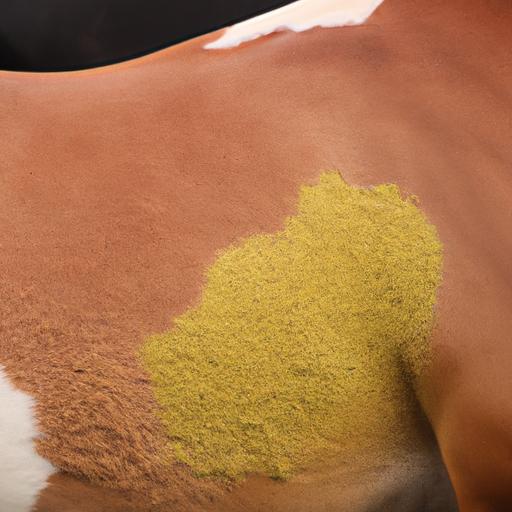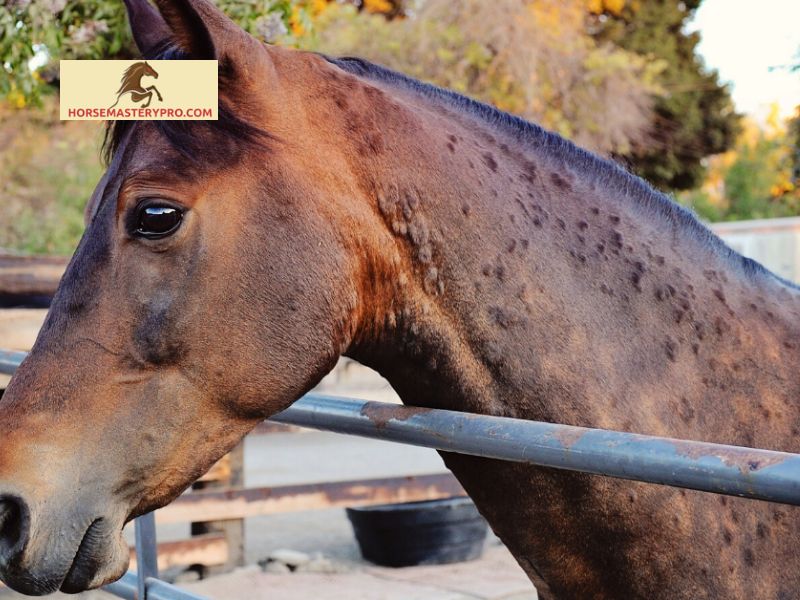Discover the symptoms and diagnostic methods for protein lumps on horses. Learn how to identify and address this condition for your equine companion’s well-being.
Protein lumps on horses can be a concerning issue for horse owners and enthusiasts alike. These lumps, also known as protein granulomas, are abnormal growths that form due to the accumulation of excess protein in certain areas of a horse’s body. While they may vary in size and appearance, protein lumps can be unsightly and, in some cases, cause discomfort to the horse.
Understanding the significance of protein lumps is crucial in order to provide the necessary care and treatment for your equine companion. These lumps can develop due to various reasons, including insect bites, skin injuries, or reactions to allergens. If left untreated, they may become infected or even hinder the horse’s performance. Therefore, it is vital to address this condition promptly and effectively.
By gaining a deeper understanding of protein lumps on horses, we can ensure their well-being and maintain their optimal health. In the following sections, we will explore the symptoms and diagnosis of protein lumps, available treatment and management options, preventive measures, and the importance of regular veterinary check-ups. Together, we will navigate through this topic to equip you with the knowledge needed to care for your horse’s welfare comprehensively.
So, let’s delve into the world of protein lumps on horses and discover how we can effectively manage and prevent this condition. By doing so, we can ensure our equine companions lead a healthy and fulfilling life.
Understanding Protein Lumps on Horses

Definition and Causes of Protein Lumps on Horses
Protein lumps, also known as protein granulomas, are abnormal growths that develop in horses due to the accumulation of excess protein in specific areas of their bodies. These lumps can vary in size, texture, and appearance, ranging from small nodules to larger masses.
The causes of protein lumps on horses can be attributed to various factors. One common cause is insect bites, particularly from flies and mosquitoes, which can lead to an inflammatory response in the horse’s skin. Additionally, skin injuries, such as cuts, scrapes, or puncture wounds, can trigger the formation of protein lumps. Horses may also develop these lumps as a result of allergic reactions to certain substances, including medications, topical applications, or environmental allergens.
Common Areas where Protein Lumps may Appear on Horses’ Bodies
Protein lumps can manifest in different areas of a horse’s body, and their location may vary depending on the underlying cause. Some common areas where these lumps may appear include:
- Legs: Protein lumps can develop on the lower legs, particularly around the fetlock joint, as a result of insect bites or minor injuries.
- Neck and Chest: Horses may exhibit protein lumps in the neck and chest region, often caused by insect bites or allergies to certain substances present in their environment.
- Back and Withers: Protein lumps may form along the back and withers area due to saddle or tack irritation, resulting in the accumulation of excess protein.
- Face and Ears: Insect bites, particularly around the face and ears, can lead to the development of protein lumps in these sensitive areas.
Understanding the common areas where protein lumps may appear is essential for early detection and prompt intervention. By recognizing these locations, horse owners can monitor their equine companions more effectively and seek appropriate veterinary care when necessary. In the next section, we will explore the symptoms and diagnosis of protein lumps on horses, providing insights into identifying this condition accurately.
Symptoms and Diagnosis

When it comes to protein lumps on horses, recognizing the symptoms is crucial for early detection and appropriate intervention. Here are some key indicators to watch out for:
Identifying the Symptoms of Protein Lumps on Horses
- Visible Swellings: Keep an eye out for abnormal bumps or lumps on your horse’s body. These protein lumps can vary in size, ranging from small nodules to larger masses.
- Skin Discoloration: Protein lumps may cause the surrounding skin to appear red, inflamed, or discolored. Pay attention to any changes in the skin’s appearance or texture.
- Pain or Sensitivity: Horses with protein lumps may exhibit discomfort or sensitivity when these areas are touched or manipulated. They may display signs of pain or exhibit behavioral changes.
- Restricted Movement: In some cases, protein lumps can impede a horse’s range of motion. Observe if your horse experiences any difficulty or reluctance while moving, especially in the affected area.
Diagnostic Methods Used by Veterinarians
To confirm the presence of protein lumps on your horse, veterinarians employ several diagnostic methods. These may include:
Physical Examination
A thorough physical examination allows veterinarians to assess the location, size, and characteristics of the protein lumps. They will palpate the area and observe the horse’s reactions, gathering valuable information to guide the diagnostic process.
Biopsy
In certain cases, veterinarians may recommend performing a biopsy to analyze the tissue composition of the protein lump. This procedure involves obtaining a small sample of the lump for microscopic examination, aiding in accurate diagnosis and treatment planning.
Diagnostic Imaging
Radiographs (X-rays) or ultrasound scans may be utilized to assess the internal structure of the protein lump. These imaging techniques provide insights into the lump’s depth, potential involvement of underlying structures, and aid in formulating an appropriate treatment approach.
By being vigilant about the symptoms and seeking professional veterinary care, you can ensure an accurate diagnosis of protein lumps on your horse. Early detection and a comprehensive understanding of the condition are vital for effective treatment and management strategies.
Preventive Measures

Protein lumps on horses can be a distressing condition, but there are measures we can take to prevent their occurrence and maintain the well-being of our equine companions. By implementing the following preventive measures, we can minimize the risk of protein lumps and ensure our horses lead a healthy and comfortable life.
Proper Nutrition and Balanced Diet for Horses
A key aspect of preventing protein lumps is providing our horses with a proper nutrition and balanced diet. Ensuring that your horse receives all the necessary nutrients, vitamins, and minerals is essential for their overall health and immune system. Consult with a veterinarian or equine nutritionist to develop a diet plan tailored to your horse’s specific needs. This may include a combination of high-quality forage, grains, and supplements to meet their dietary requirements.
Regular Veterinary Check-ups and Monitoring of the Horse’s Health
Regular veterinary check-ups play a crucial role in preventing protein lumps on horses. By scheduling routine examinations, a veterinarian can assess your horse’s overall health, identify any potential issues, and provide timely treatments or recommendations. During these check-ups, the veterinarian may also examine the horse’s skin for any abnormalities or early signs of protein lumps. Additionally, maintaining a vigilant eye on your horse’s health and promptly addressing any changes or concerns can contribute to the prevention of protein lumps.
Conclusion
Preventing protein lumps on horses requires a proactive approach that includes proper nutrition, regular veterinary check-ups, and attentive monitoring of your horse’s health. By implementing these preventive measures, you can significantly reduce the likelihood of protein lumps and promote the long-term well-being of your equine companion.
Remember, prevention is always better than cure. Take the necessary steps and provide your horse with the care they deserve to keep them healthy, happy, and free from protein lumps.
horsemasterypro.com – Your partner in equine care and well-being.
Conclusion
In conclusion, understanding and addressing protein lumps on horses is crucial for maintaining their overall health and well-being. These abnormal growths, caused by the accumulation of excess protein, can be unsightly and potentially uncomfortable for our equine companions. By promptly identifying the symptoms and seeking proper veterinary diagnosis, we can ensure effective treatment and management.
Throughout this article, we have explored the significance of protein lumps on horses and the importance of addressing this condition. We have discussed the symptoms to look out for and the diagnostic methods used by veterinarians to confirm the presence of protein lumps. It is essential to remember that early detection is key to preventing complications and ensuring the best possible outcome for our horses.
To effectively manage protein lumps, various treatment options are available, including medications, surgical interventions, and alternative therapies. Additionally, maintaining proper wound care and hygiene is crucial to prevent infections and aid in the healing process.
Prevention is equally important, and by implementing measures such as providing a balanced diet, regular veterinary check-ups, and monitoring the horse’s health, we can minimize the occurrence of protein lumps.
In conclusion, a proactive approach to protein lumps on horses is essential. By staying informed, seeking veterinary guidance, and providing appropriate care, we can help our equine companions live a comfortable and healthy life.
Remember, when it comes to the well-being of your horse, consult with a veterinarian for proper diagnosis and management strategies. For more informative articles and resources on horse care, visit horsemasterypro.com.
Together, let’s ensure the health and happiness of our beloved horses.


